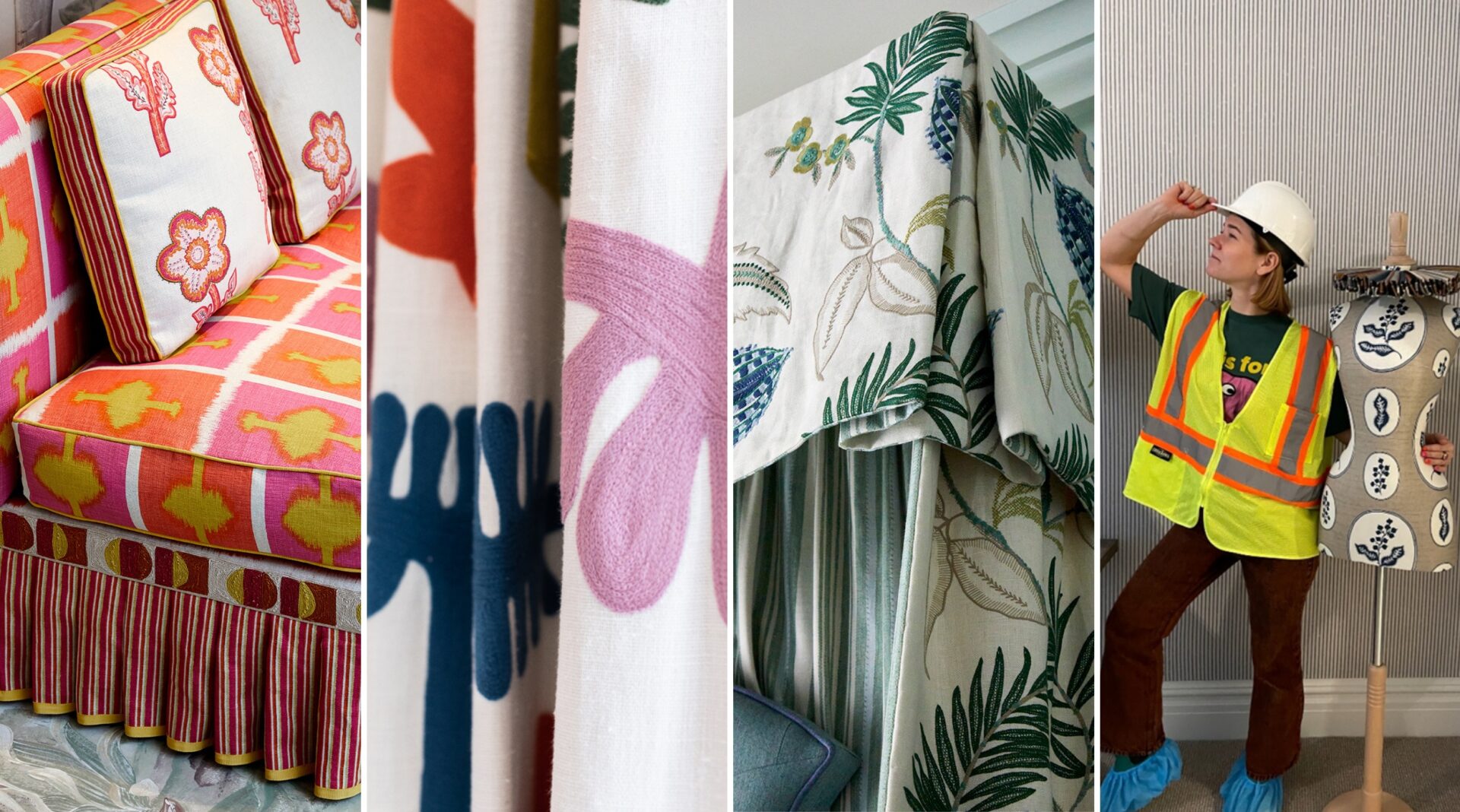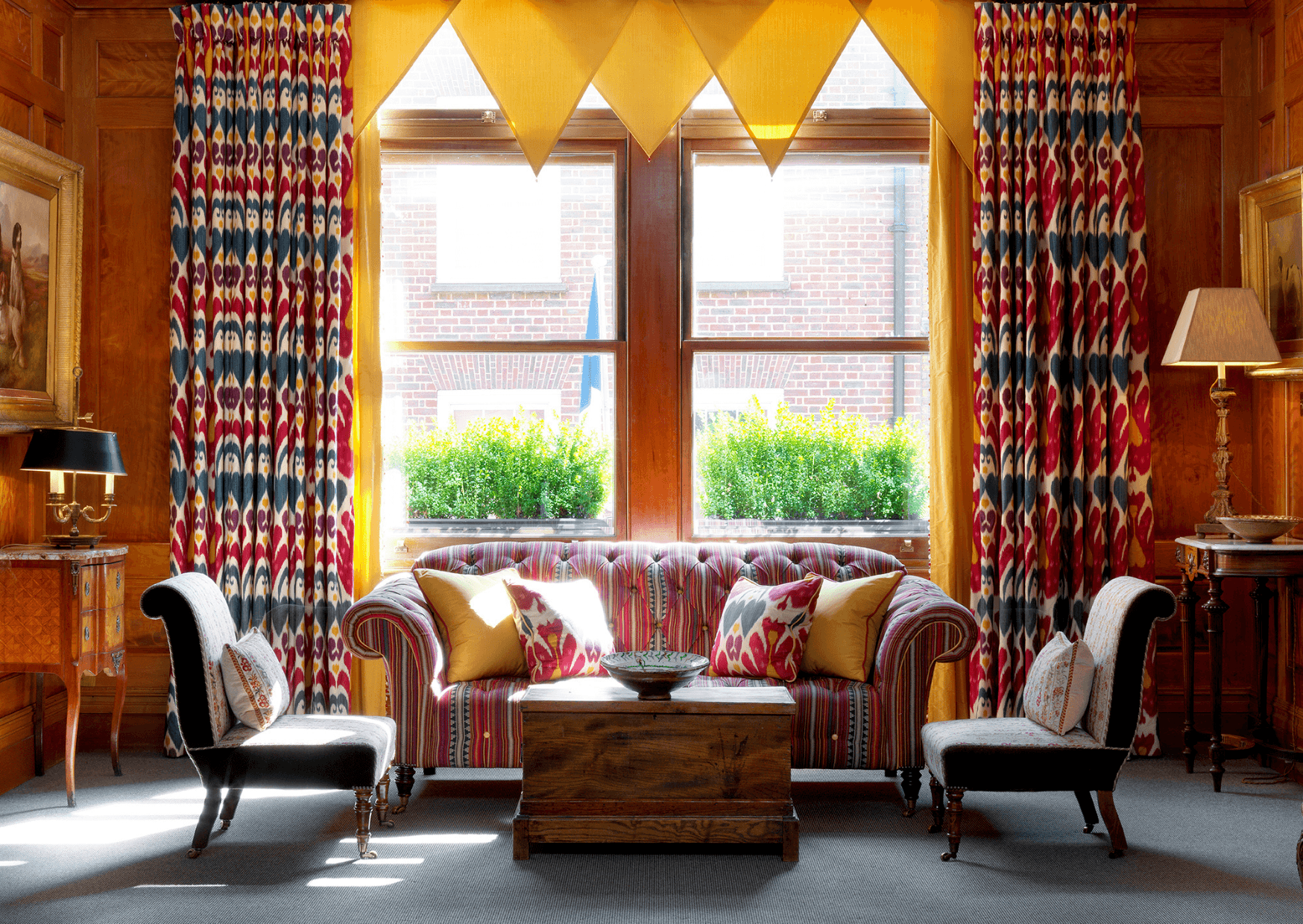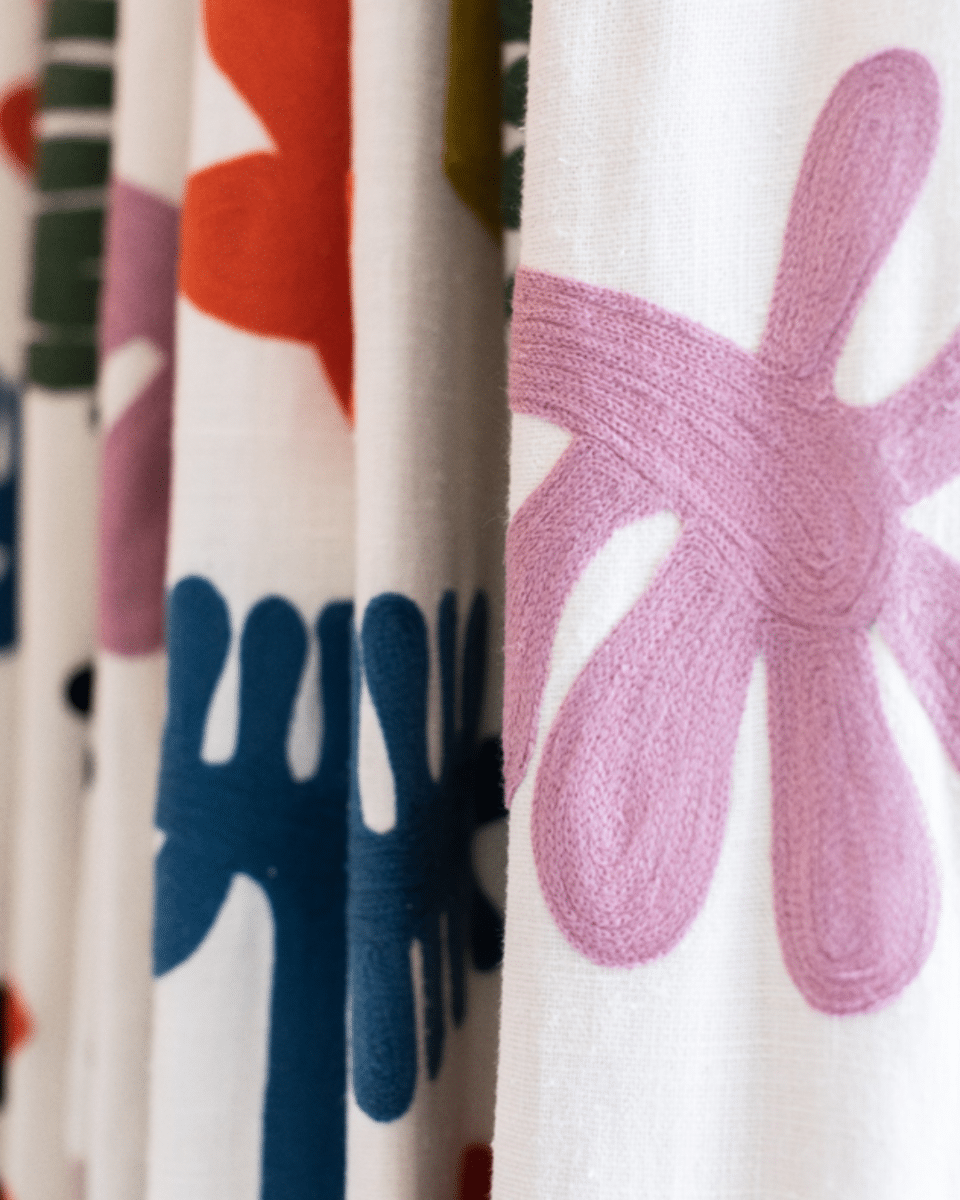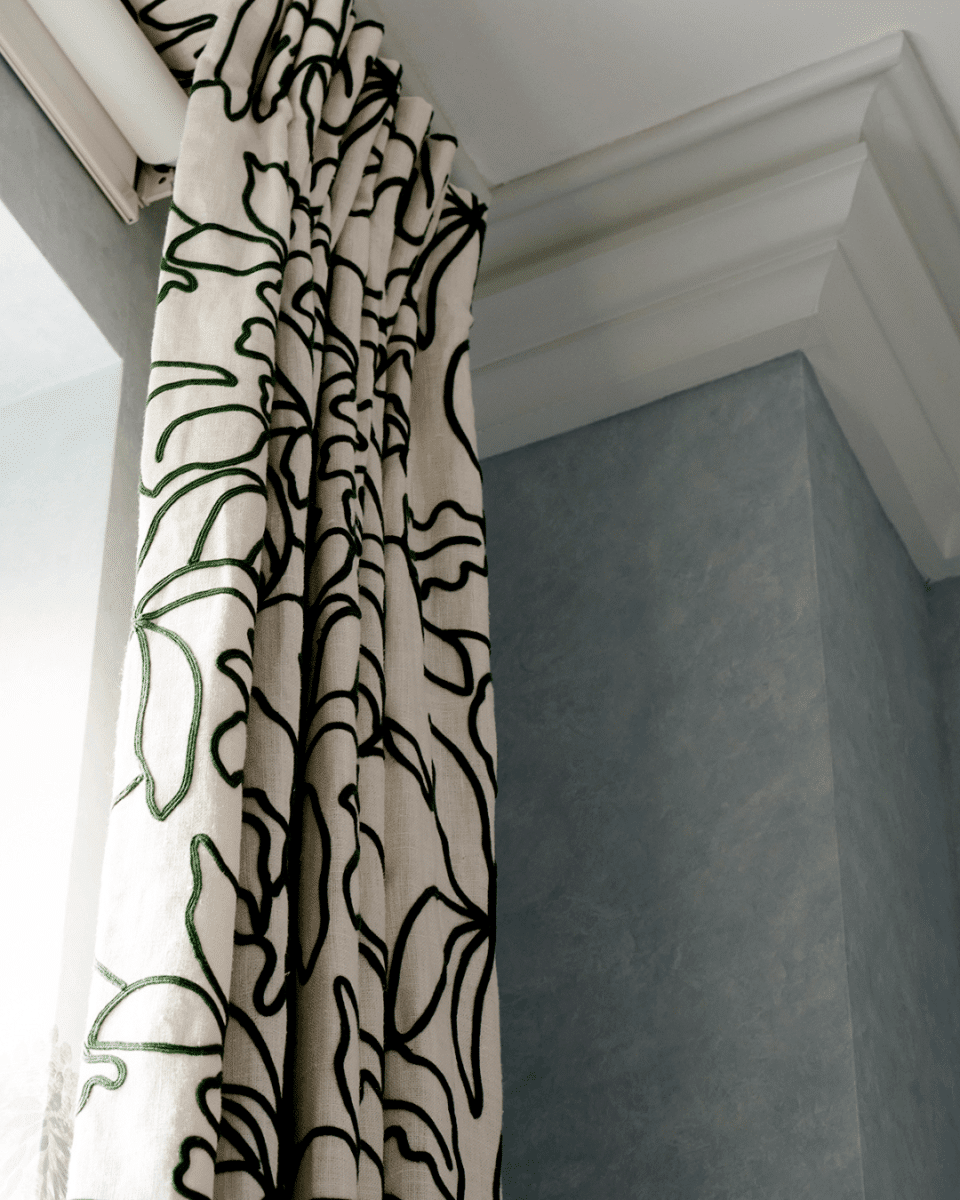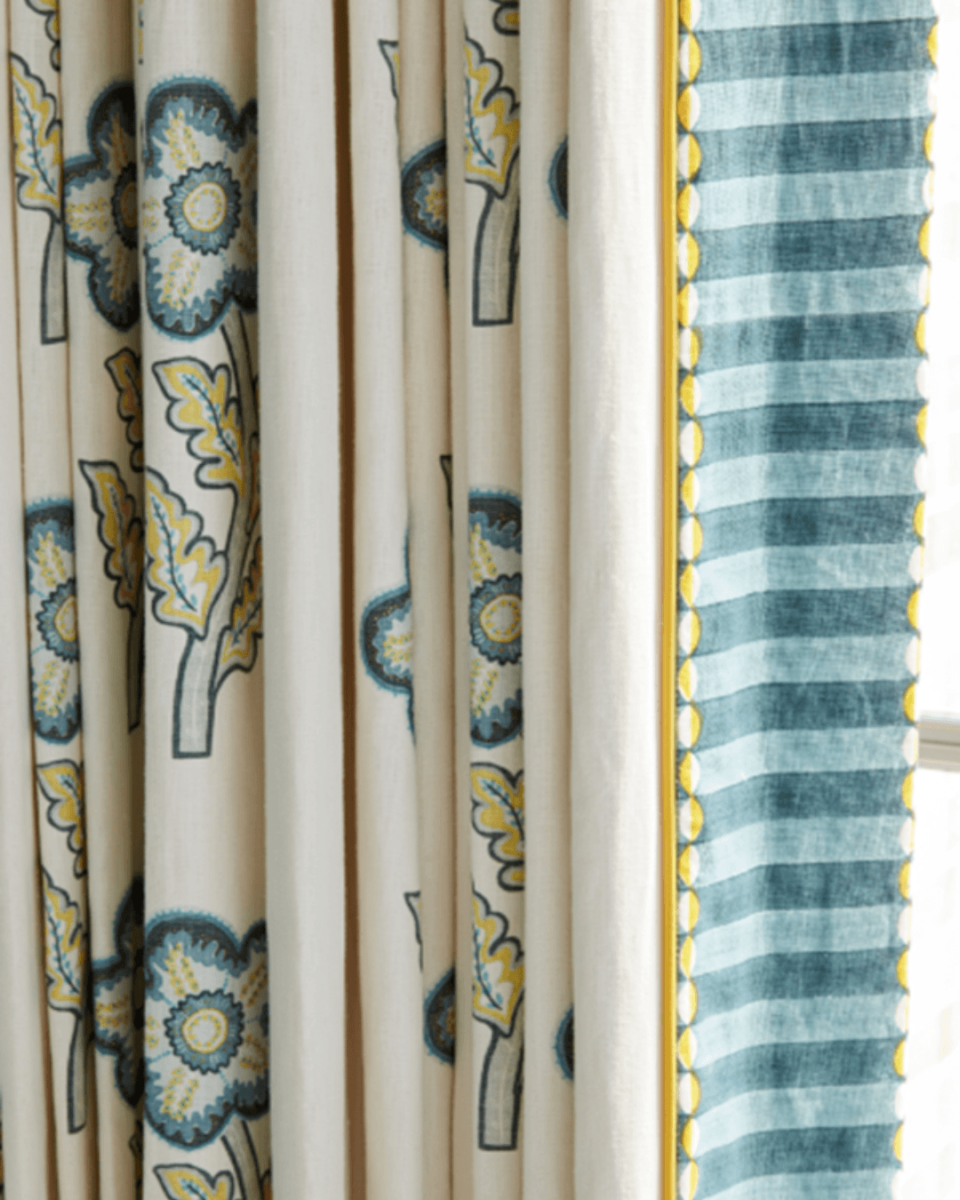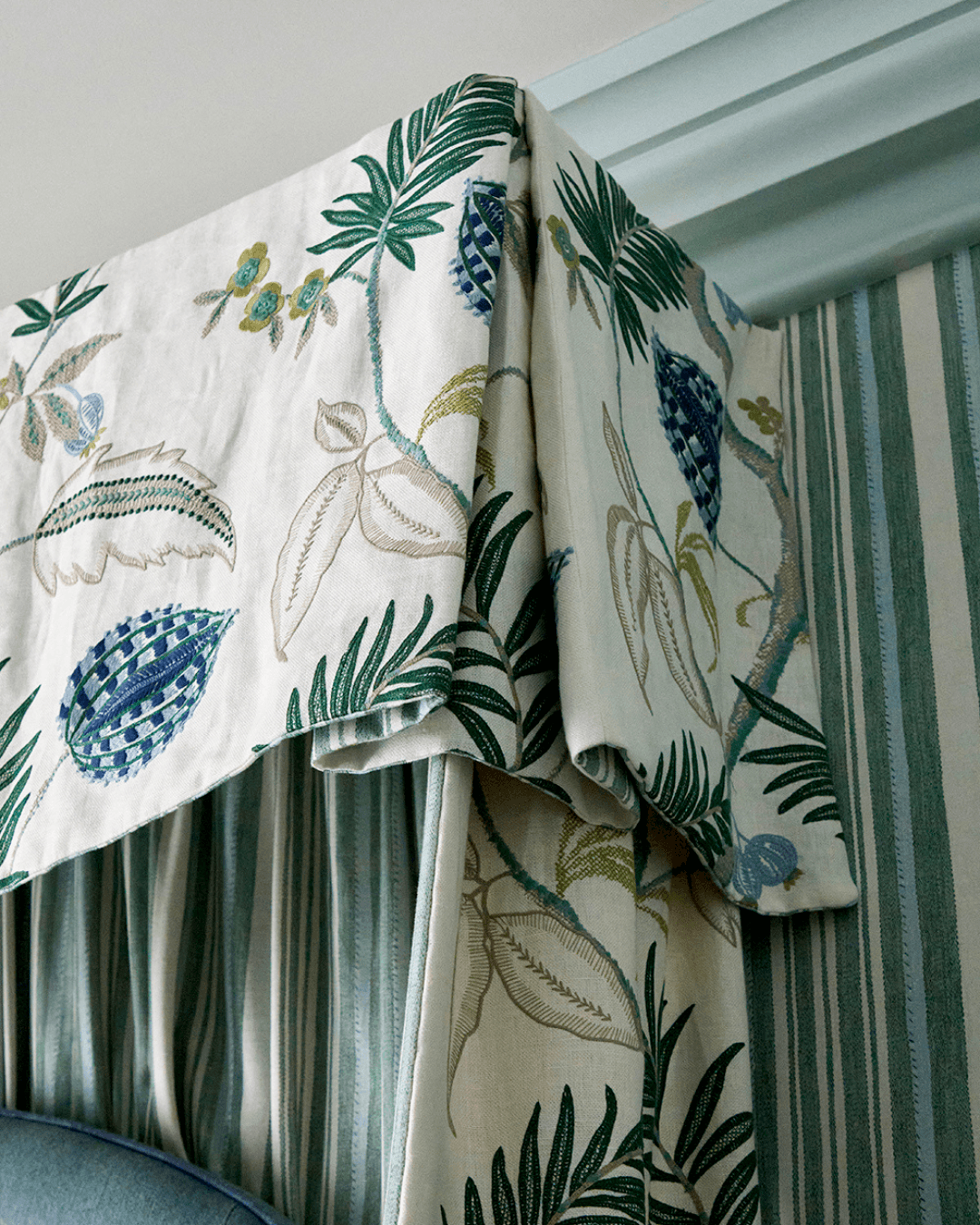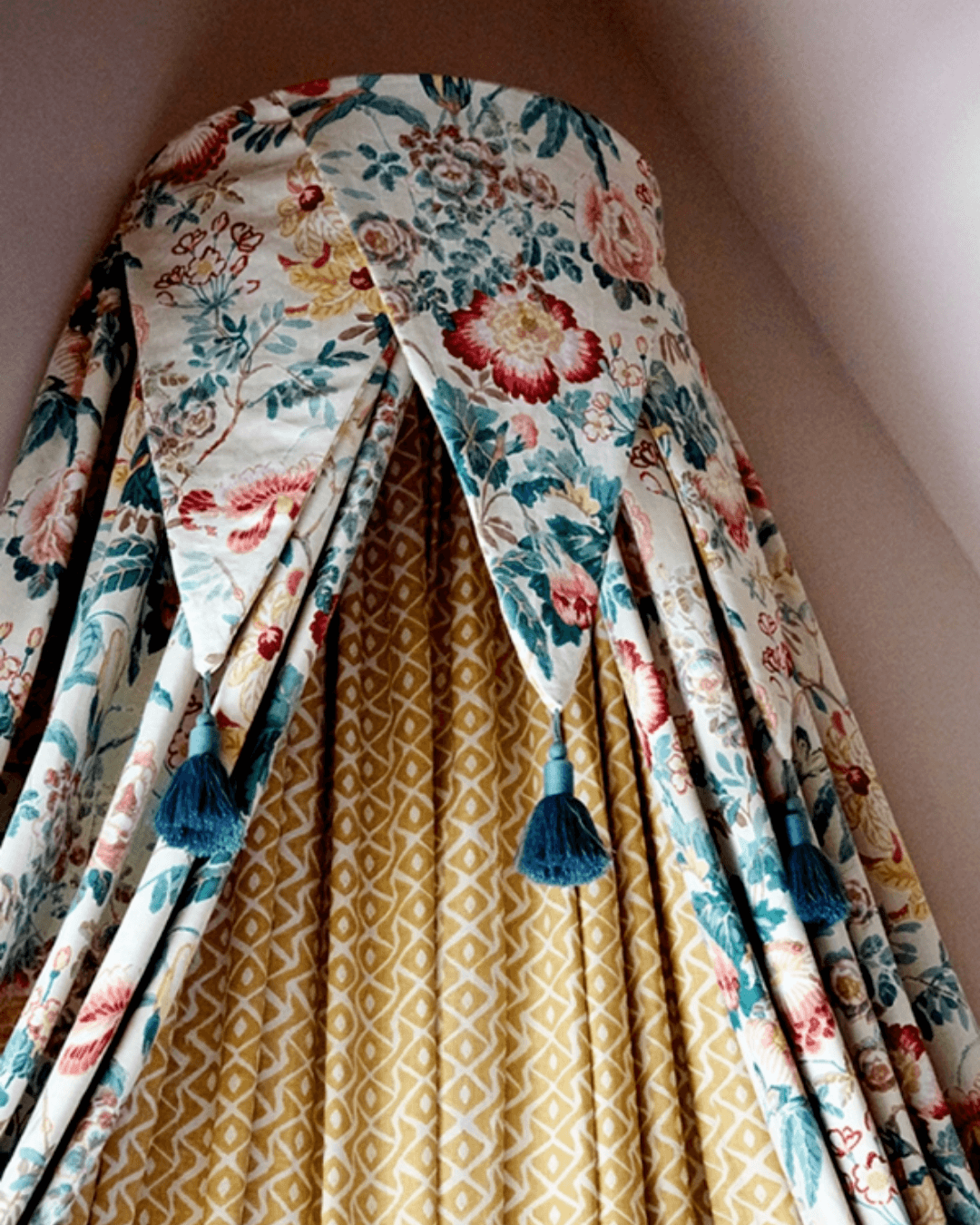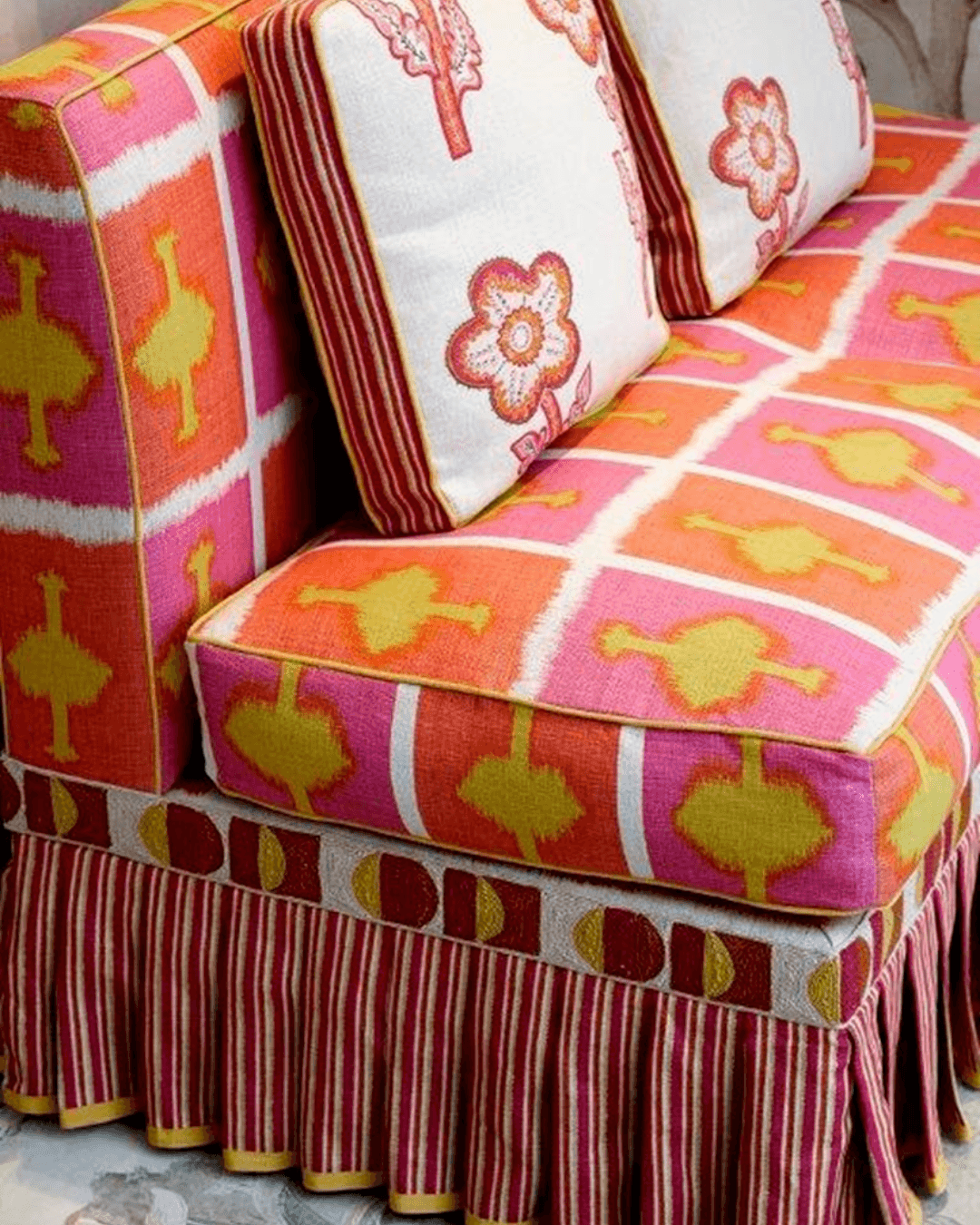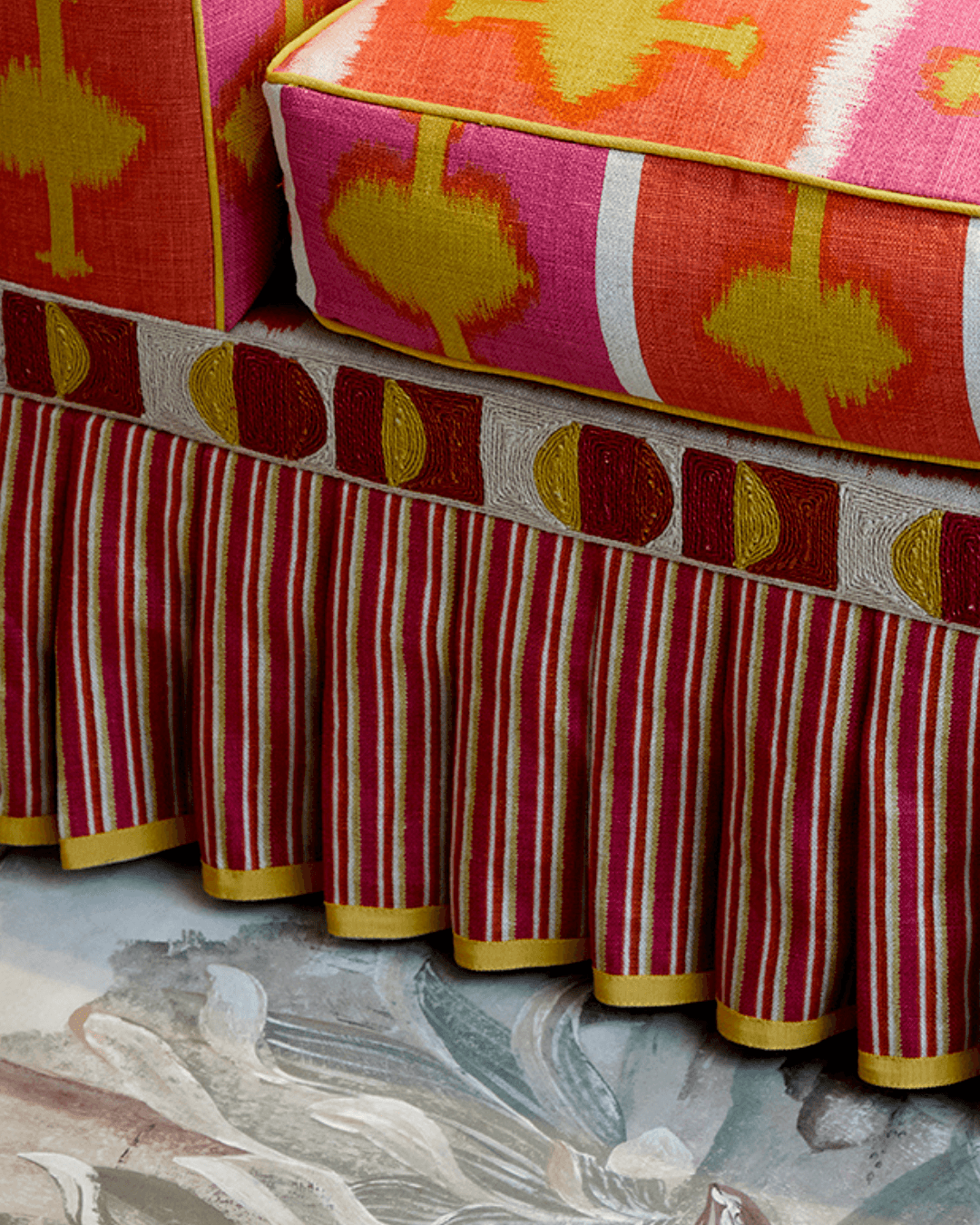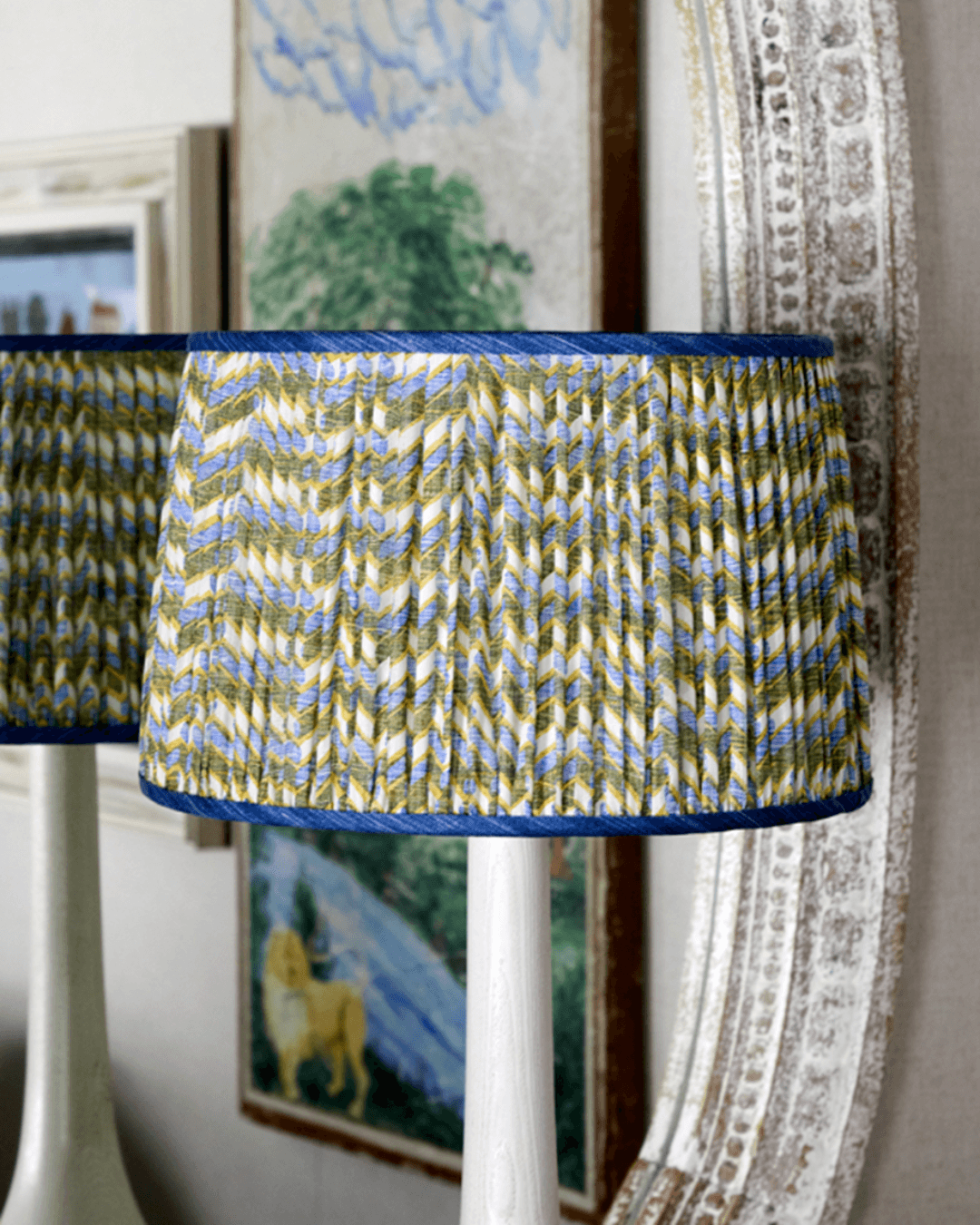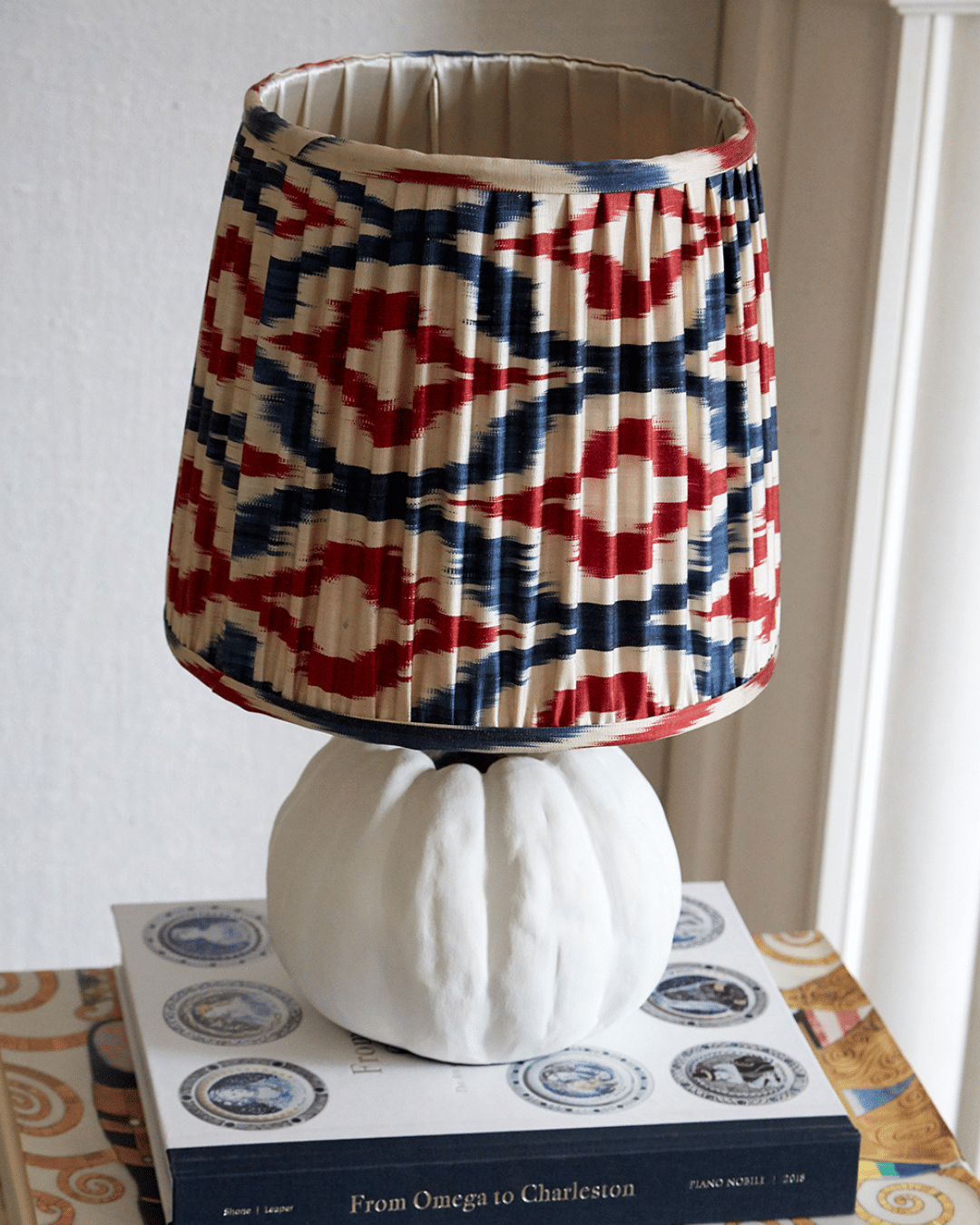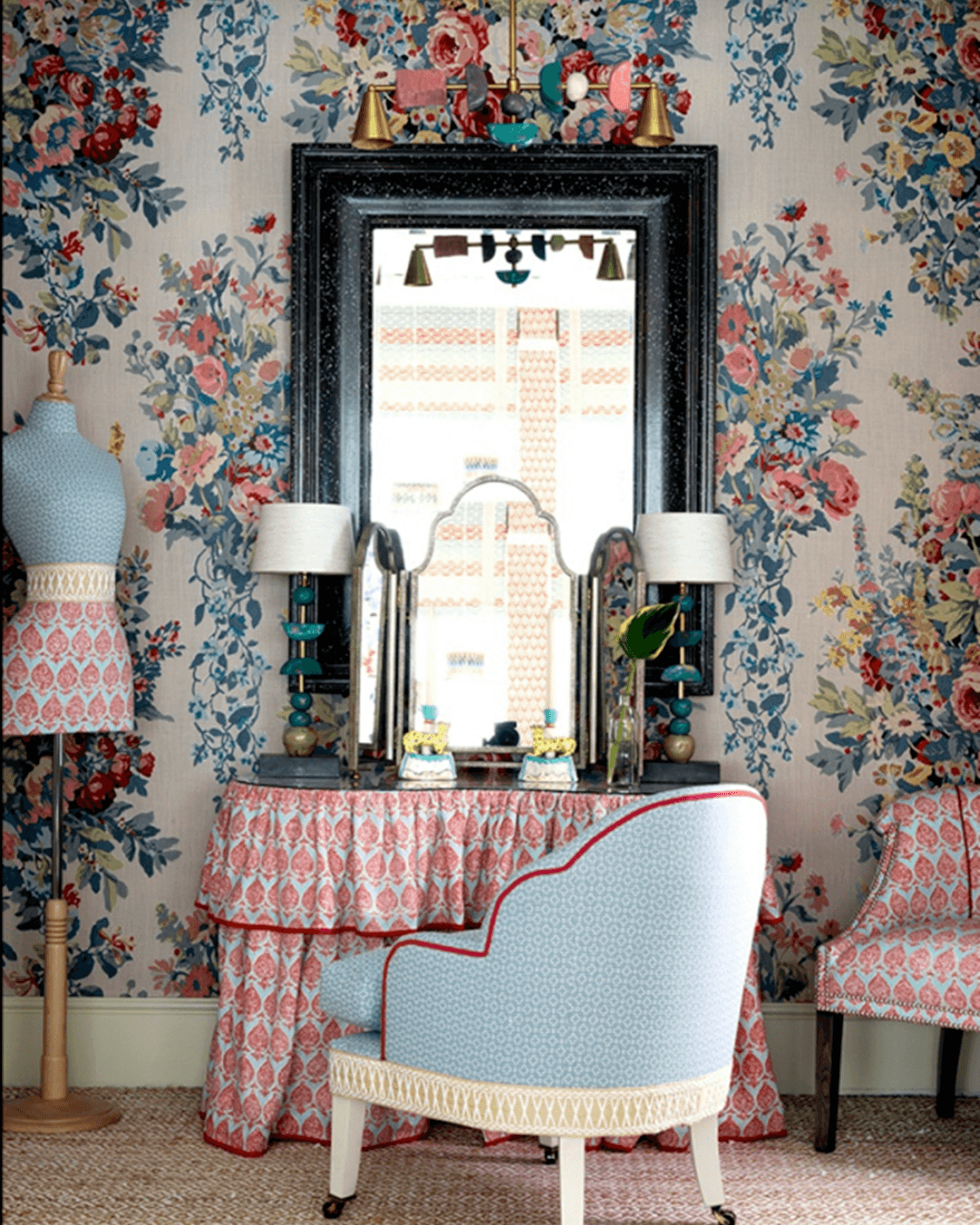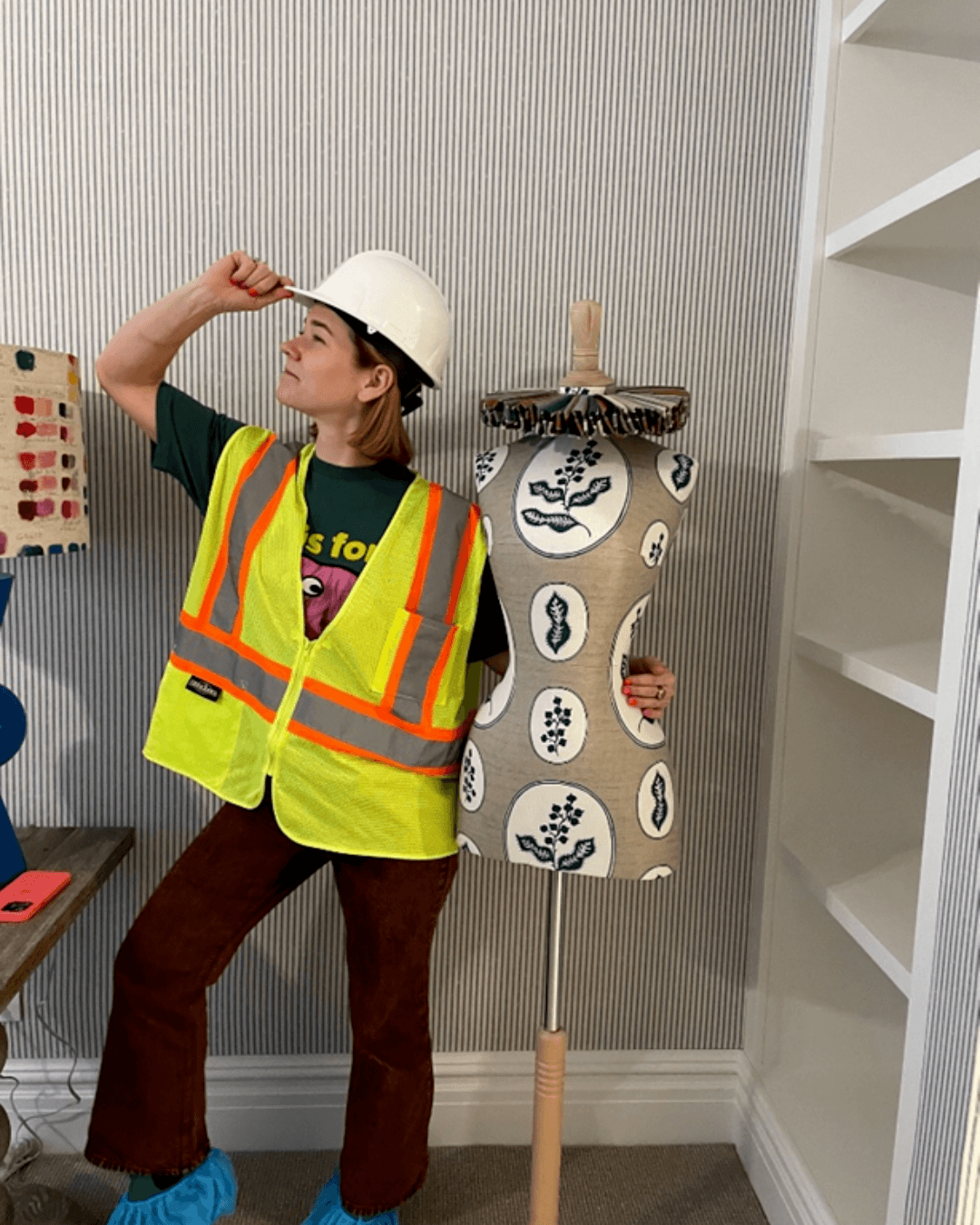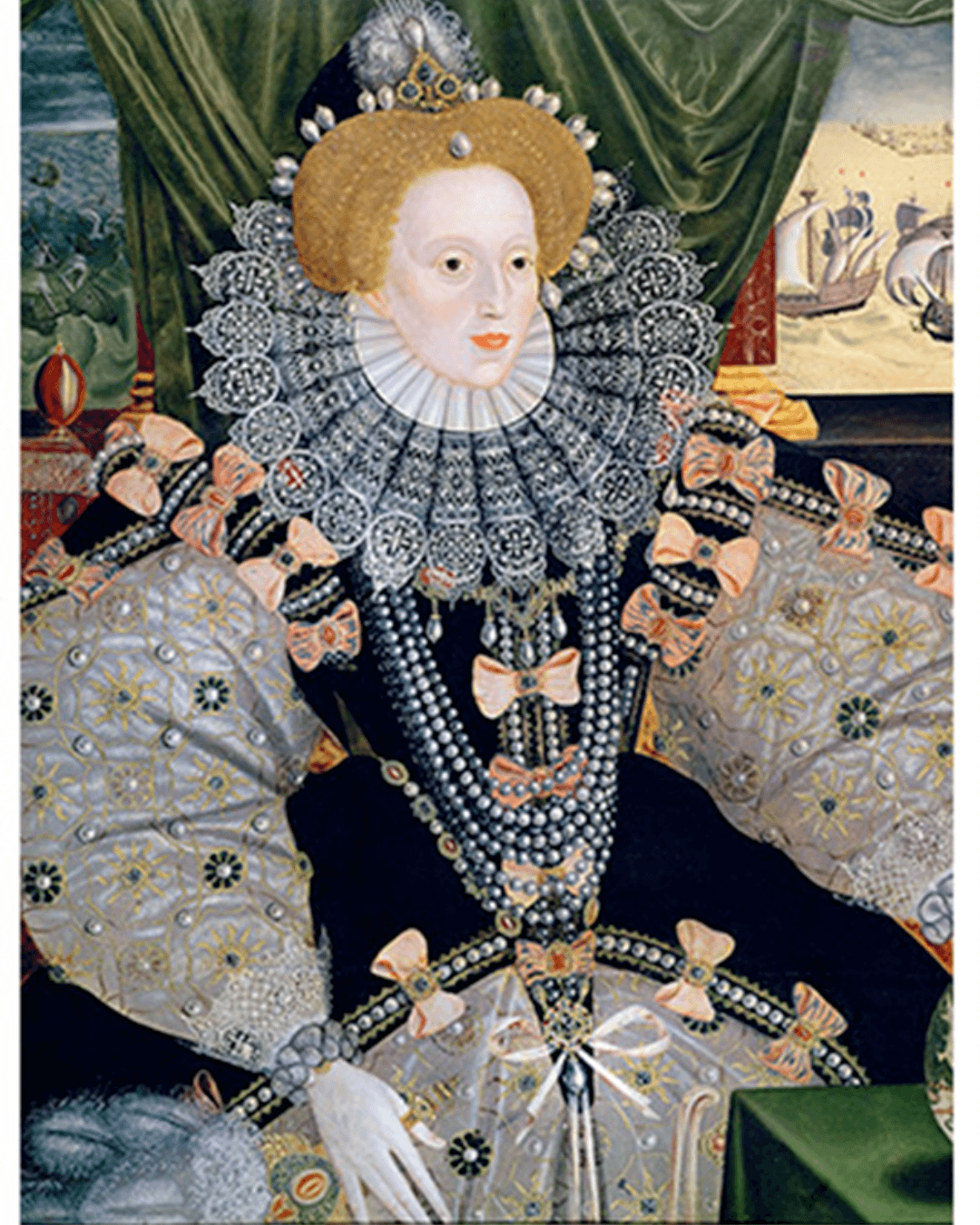On today’s blog, we are delving into the art of pleating. A design process that traces back to the ancient Egyptians. Pleating involves creating creases in fabric, transforming a two-dimensional flat image into a three-dimensional, textured and folded piece of cloth. Within fashion and interior design, various pleat designs exist, including accordion, side, box, sunburst and many more.
In our work, we often utilise pleats in curtains to achieve elegant and proper hanging. The simple pleat design ensures that the curtains hang gracefully, with the fabric excitingly changing as they open and close.
In our bed canopies and half-drop testers, pleats provide both structure and texture, adding imagination and a romantic element to the space.
Bed valances also feature pleats, incorporating a kick pleat for a spontaneous pop of colour while maintaining clean hanging lines.
Pleats can also be found in furniture design, such as adding dimension and fun to the skirt of loveseats or sofas. Below we have used our ‘Peace and Love’ fabric as a trim for our ‘Ozone’ fabric on the loveseat.
Pleated lampshades are a favourite, creating texture and a unique perspective on fine prints.
Additionally, adding a skirt to a dressing table or desk brings a feminine and playful touch to the space. We’ve paired a Raoul fabric with floral wall covering for a striking contrast.
In our new Warren Street Hotel, we’ve incorporated an accordion pleat in a semi-circle around the mannequin’s neck. This pays homage to the Elizabethan era, where pleated collars known as Ruff were emblematic of nobility and status.
We hope you’ve enjoyed looking into the accident art of pleating and it’s inspired you to try some within your own designs.

